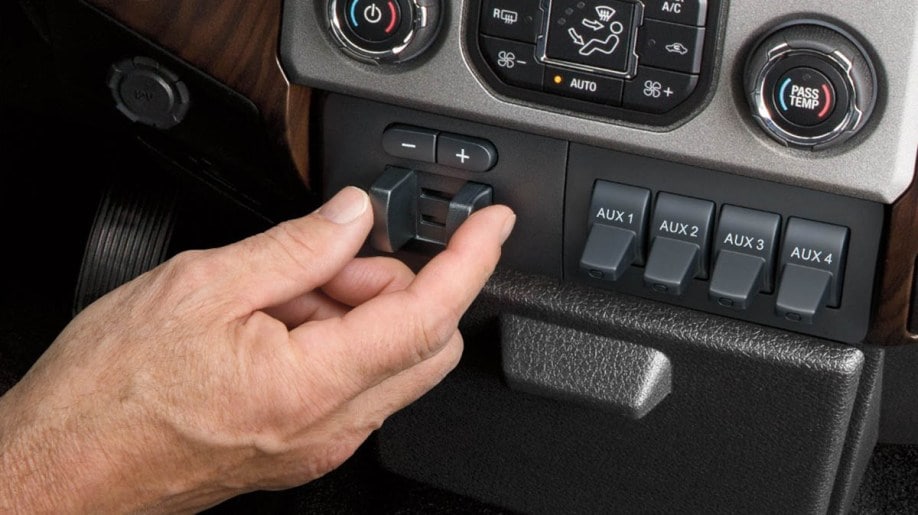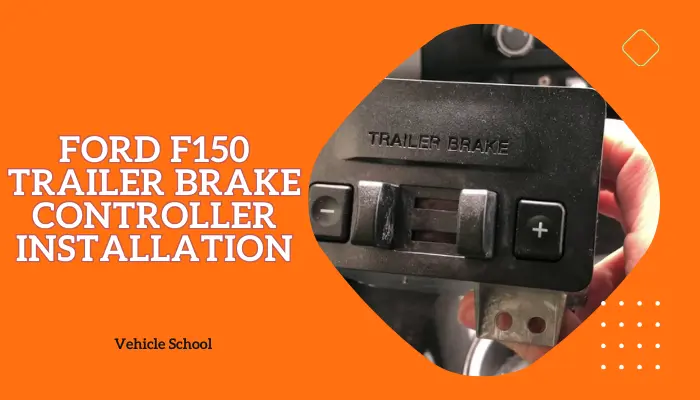How To Use F150 Trailer Brake Controller

Mastering the integrated trailer brake controller in a Ford F-150 is crucial for safe and controlled towing, especially when hauling heavier loads. Understanding its features and proper setup can significantly enhance the towing experience, minimizing the risk of accidents and ensuring the safety of both the driver and the trailer.
This article provides a comprehensive guide on how to effectively use the F-150's trailer brake controller. We will walk you through the setup process, adjustment procedures, and troubleshooting tips, drawing on official Ford documentation and expert advice to ensure accuracy.
Understanding the F-150 Trailer Brake Controller
The integrated trailer brake controller (TBC) in the Ford F-150 allows drivers to electronically control the brakes on a connected trailer. This system synchronizes the trailer's brakes with the truck's brakes, providing smoother and more stable stopping power.
By adjusting the gain setting, drivers can customize the braking force applied to the trailer, optimizing performance for different trailer weights and road conditions. Ford emphasizes the importance of properly calibrating the TBC for safe towing.
Initial Setup and Connection
Before using the TBC, ensure the trailer is properly connected to the F-150's hitch and electrical system. Verify that the trailer's brake lights, turn signals, and electric brakes are functioning correctly.
Connect the trailer's electrical connector to the F-150's trailer wiring harness receptacle. Most F-150s use a 7-pin connector, but adaptors are available if your trailer uses a different type.
Accessing the Trailer Brake Controller Menu
The trailer brake controller settings are typically accessed through the F-150's information display screen located in the instrument cluster. Use the steering wheel-mounted controls to navigate the menu.
Look for a menu option labeled "Trailer," "Towing," or "Brakes." The exact wording may vary depending on the F-150's model year and trim level. Consult your owner's manual for specific instructions.
Adjusting the Gain Setting
The gain setting determines the amount of braking force applied to the trailer's brakes. Adjusting the gain is crucial for optimal performance and safety.
Start with a low gain setting and gradually increase it until you feel the trailer brakes engaging slightly before the truck's brakes when applying the brake pedal. If the trailer brakes lock up, reduce the gain.
Performing a Test Drive
After adjusting the gain, perform a test drive in a safe, open area. Drive at a moderate speed (around 20-25 mph) and apply the brakes firmly.
Observe the trailer's behavior. If the trailer brakes are working correctly, you should feel a smooth and controlled deceleration.
Using the Manual Control Lever
The F-150's trailer brake controller also includes a manual control lever. This lever allows you to independently activate the trailer brakes.
Use the manual control lever sparingly and only in situations where you need to apply the trailer brakes separately, such as during trailer sway or in icy conditions. Overuse can damage the trailer brakes.
Troubleshooting Common Issues
If you experience problems with the trailer brakes, such as weak braking or brake lockup, check the trailer's wiring and brake components. Ensure all connections are secure and free of corrosion.
Also, inspect the trailer brake magnets for wear or damage. A faulty brake magnet can cause inconsistent braking performance.
If the issue persists, consult a qualified trailer repair technician. Ignoring brake problems can lead to serious accidents.
Proper use of the F-150 trailer brake controller requires careful attention to detail and a commitment to safety. Regularly inspecting your equipment and performing routine maintenance can help ensure trouble-free towing for years to come.
By following these guidelines, F-150 owners can maximize the benefits of their integrated trailer brake controller, enhancing their towing experience and ensuring the safety of themselves and others on the road. Always refer to your F-150 owner's manual for the most up-to-date information and specific instructions related to your vehicle model.


















